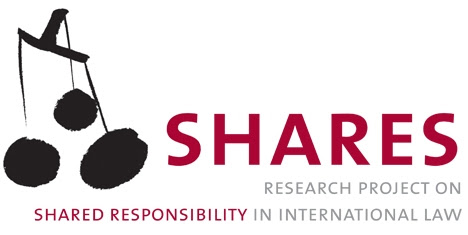Posted by: Heijer Maarten den
This week, a committee of the Parliamentary Assembly of the Council of Europe released a draft resolution and report on the fateful voyage of what has been dubbed the ‘left to die’ boat – a story that was first picked up by The Guardian. The tragedy involved a boat carrying 72 Sub-Saharan migrants who fled from the conflict in Libya in March 2011, but ran into trouble and, despite a distress call by satellite from the ship’s Ghanaian “captain” to an Eritrean priest living in Italy who alerted the Rome Maritime Rescue Coordination Centre (Rome MRCC), eventually washed up on the shores of Libya 15 days later. By then, only 11 people were still alive.
The story was made all the more rueful because of testimonies from the survivors that, while adrift somewhere between the Italian island Lampedusa and Libya, they had made contact with several boats (commercial fishing vessels and allegedly an aircraft carrier belonging to France, which was however denied by France and NATO) and even a military helicopter which had lowered down bottles of water and biscuits into the vessel and then flew away, never to return – but their calls for help were all but ignored.
The report finds that pretty much everything went wrong: there was a failure of NATO, the United Nations and individual States in planning the Libyan military operations and preparing for an expected exodus by sea; a failure of the Italian and Maltese authorities in coordinating the rescue and launching a rescue operation; communication misunderstandings; a failure of NATO vessels in the vicinity and commercial fishing boats to follow up on repeated navigational distress warnings. In short, the report concludes: a collective failure.
Although the report was unable to verify all allegations and leaves many questions – especially the legal ones – unanswered, it vividly uncovers how all kinds of dynamics (war, migration) and the sharing of responsibilities between States and international organizations may result in no-one actually undertaking any action.
For me, this is the Council of Europe at its best. Although mainly known for housing the European Court of Human Rights – the Parliamentary Assembly, but also the Committee for the Prevention of Torture (CPT), have often engaged in fact finding activities that later turned out to have major political repercussions. Think, for example, of the frequent CPT’s visits to the imprisoned PKK-leader Öcalan on Imrali island and very recently its visit to the detained former Ukrainian prime-minister Yulia Tymoshenko (see also here and here). Think also of the persistent efforts of Swiss senator Dick Marty and member of the Parliamentary Assembly, to uncover the spider’s web of extraordinary renditions and secret CIA prisons in Europe after 9/11. His efforts eventually lead, some five years after his first report and despite earlier denials, to evidence that such prisons had indeed existed in Europe.
As to the present report’s legal implications, one might expect that it would at least re-open the debate on necessary amendments to the maritime SAR framework (after the 2004 overhaul of the Annex to the International Convention on Maritime Search and Rescue). Some specific points mentioned in the report concern the distribution of responsibilities for coordinating and undertaking rescue operations (one obvious issue was the responsibility vacuum for Libya’s SAR zone), the question of how to enforce duties of rescue on the part of private shipmasters, and the interpretation of what constitutes a vessel in distress (should not any unseaworthy and overcrowded vessel with barely any supplies, navigational equipment and an untrained captain be considered to be in distress, regardless of whether it is still running on its engines? – something which according to the report was disputed by the Rome MRCC).
And then there is the question of distribution of responsibilities between NATO and its Member States. In a letter to rapporteur Ms. Tineke Strik from the Netherlands, NATO explained that it had forwarded all emergency alerts to NATO task force units under its operational control. It further succinctly referred to information provided by the Spanish and Italian authorities that their vessels in the vicinity at the time had often engaged in rescue operations and that they were well aware of their relevant obligations under maritime law. It is at least disturbing to see how readily NATO command discharges itself of any responsibility – and fails to announce for example, that it will try to get to the bottom of things.
Perhaps more than anything, the whole episode signifies how European authorities and societies have learned to look away from the constant flow of migrants packed in makeshift vessels trying to make their way to Europe. The foremost challenge to be confronted then, is reminding ourselves that international legal standards apply equally to all those who embark upon such fateful journeys. This very notion was recently underscored by the European Court in the case of Hirsi v Italy.
